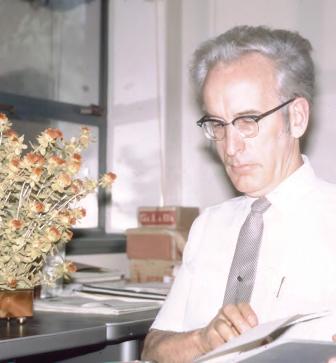- Diets of 2062 will be as unfamiliar to us as our diets are to our grandparents.
- What the Global Crop Diversity Trust did in 2011.
- Big time worm farming.
- Alberta dope cops lousy botanists.
Nibbles: Meta-blogging, NUS scholarships, Insects & plant diversity, Commons, Trees and diet, Thyme, ABS
- Why they blog. At the Agriculture and Ecosystems Blog Agriculture and Ecosystems Blog that is. Can’t help thinking that the media should perhaps be alerted.
- Scholarships available at the Crops for the Future Research Centre.
- Yes, ok EurekAlert!, we get it , insects are really important to plant diversity.
- Yes, ok policy wonks, we get it, it’s really useful to see plant genetic resources as global commons.
- More tree cover means more diverse diet in Africa.
- Thyme, gentlemen, please.
- FAO Commission on Genetic Resources for Food and Agriculture Ad Hoc Technical Working Group on Access and Benefit-sharing for Genetic Resources for Food and Agriculture debates, well, access and benefit-sharing for genetic resources for food and agriculture. In Svalbard, of all places.
Nibbles: Ames genebank, G20 meet, European bison, Genomics training, Old words, Roadside Salvia
- Yet another USDA genebank in the news. This time it’s maize.
- G20 Agriculture vice-ministers recommend to “Support the development and promotion of a global information sharing system on plant and animal genetic resources.”
- Bison returns to Germany.
- Learn population genomics of crops and livestock.
- Ebony is a pretty old word.
- How Salvia got around.
Safeguarding safflower
In the late 1950’s and mid 1960’s, Knowles traveled over 32,000 miles with his wife and son overland across North Africa, the Middle East, and South Asia gathering germplasm of wild and domesticated safflower species, an effort which produced most of the species now in the USDA world safflower collection.
 Paulden F. Knowles worked at UC Davis for 35 years, retiring in 1982. Just before he died in 1990, he wrote out in longhand the story of his career in safflower development. That document has now been edited Patrick E. McGuire, Ardeshir B. Damania, and Calvin O. Qualset of the Department of Plant Sciences, and is available online. It makes for fascinating reading. But I can’t resist the temptation of leaving you with an excerpt from the editors’ summary, rather than the report itself.
Paulden F. Knowles worked at UC Davis for 35 years, retiring in 1982. Just before he died in 1990, he wrote out in longhand the story of his career in safflower development. That document has now been edited Patrick E. McGuire, Ardeshir B. Damania, and Calvin O. Qualset of the Department of Plant Sciences, and is available online. It makes for fascinating reading. But I can’t resist the temptation of leaving you with an excerpt from the editors’ summary, rather than the report itself.
Paul Knowles’ work finished with the decade of the 1980s. At the time of his death in 1990, work was underway that would culminate with the opening for signature in 1992 of the Convention on Biological Diversity and its subsequent entry into force at the end of 1993. It is an important question whether he could have done his work in the international germplasm access and exchange environment that exists post-CBD. Certainly under the CBD, there is nothing in theory that would prevent his accomplishments, but in practice the many bilateral agreements for exchange of germplasm necessary today and the difficulty in obtaining these (as exemplified by the records of the past 20 years) make it highly unlikely that the current state of safflower knowledge and productivity would have been possible. The International Treaty for Plant Genetic Resources for Food and Agriculture and its Multilateral System for genetic resources access that emerged in the early 2000s would not have helped Knowles’ safflower work either. Safflower is not one of the crops covered under the Treaty.
Nibbles: Cryo primer, Ag development paradigms smackdown, Edible book, Roots & tubers conference, Deep taxonomy, WWF ag investment report, Forecasting rape disease, Amaranth, Competition
- Science 2.0 Conservation 101 #fail.
- It’s the roads, stupid. Well, not only. Cowen cowed.
- Big book on the edible plants of Central America online.
- Big root and tuber meet gets off the ground in Nigeria with pean for cassava.
- How to link taxonomic names to everything
- Responsible investment in agriculture. Mitt Romney alerted.
- Video on diseases of oilseed rape, Rothamsted shares forecast (and it’s not good). So, is there any diversity in host response?
- Amaranth, big time.
- Correcting the capitalist tools on their misunderstanding of evolution. The tragedy is, they don’t seem to know they don’t know.